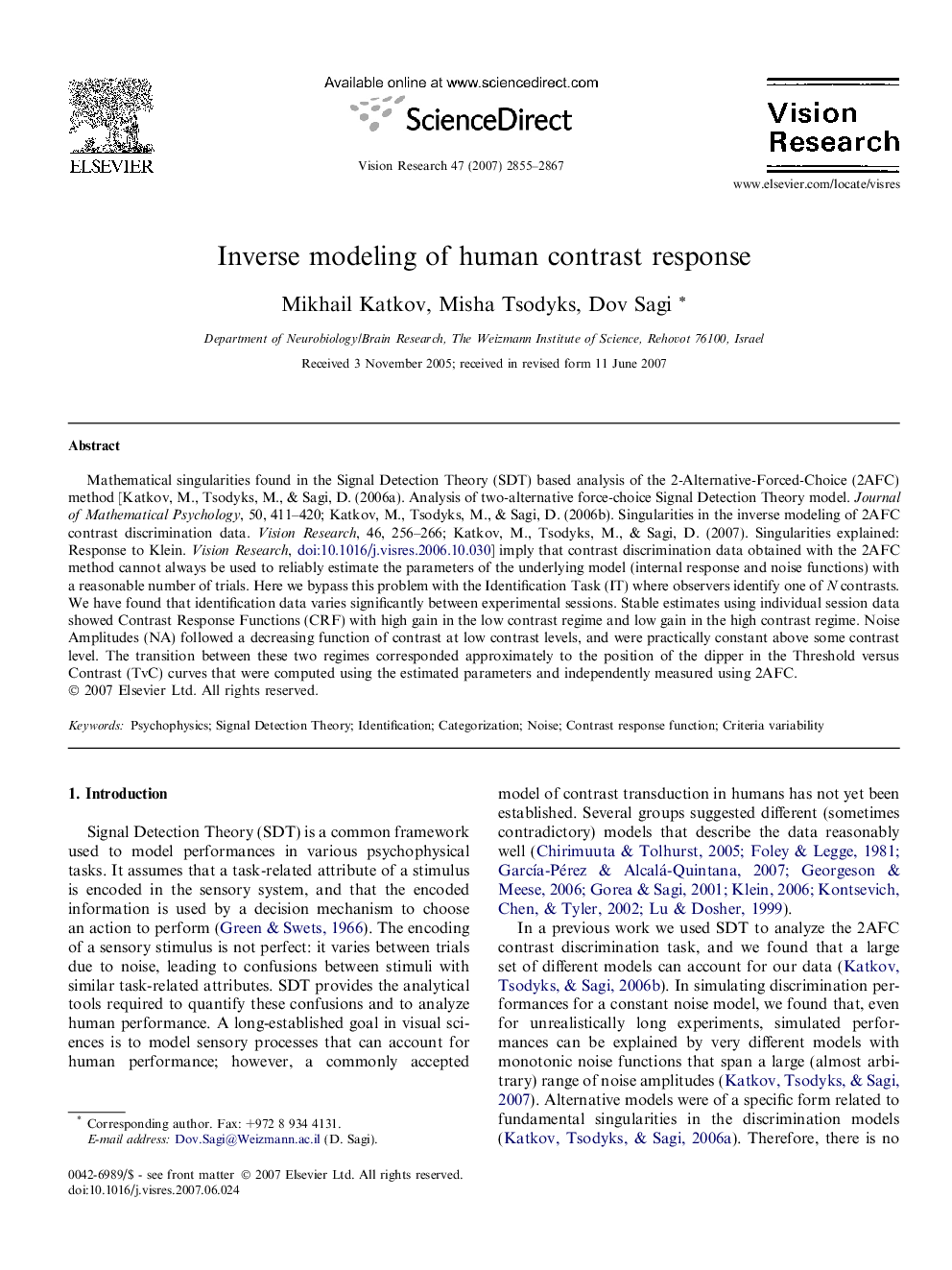| کد مقاله | کد نشریه | سال انتشار | مقاله انگلیسی | نسخه تمام متن |
|---|---|---|---|---|
| 4035480 | 1263529 | 2007 | 13 صفحه PDF | دانلود رایگان |

Mathematical singularities found in the Signal Detection Theory (SDT) based analysis of the 2-Alternative-Forced-Choice (2AFC) method [Katkov, M., Tsodyks, M., & Sagi, D. (2006a). Analysis of two-alternative force-choice Signal Detection Theory model. Journal of Mathematical Psychology, 50, 411–420; Katkov, M., Tsodyks, M., & Sagi, D. (2006b). Singularities in the inverse modeling of 2AFC contrast discrimination data. Vision Research, 46, 256–266; Katkov, M., Tsodyks, M., & Sagi, D. (2007). Singularities explained: Response to Klein. Vision Research, doi:10.1016/j.visres.2006.10.030] imply that contrast discrimination data obtained with the 2AFC method cannot always be used to reliably estimate the parameters of the underlying model (internal response and noise functions) with a reasonable number of trials. Here we bypass this problem with the Identification Task (IT) where observers identify one of N contrasts. We have found that identification data varies significantly between experimental sessions. Stable estimates using individual session data showed Contrast Response Functions (CRF) with high gain in the low contrast regime and low gain in the high contrast regime. Noise Amplitudes (NA) followed a decreasing function of contrast at low contrast levels, and were practically constant above some contrast level. The transition between these two regimes corresponded approximately to the position of the dipper in the Threshold versus Contrast (TvC) curves that were computed using the estimated parameters and independently measured using 2AFC.
Journal: Vision Research - Volume 47, Issue 22, October 2007, Pages 2855–2867